The Colonial Penang Museum is discreetly hidden away in the shady George Town suburb of Pulau Tikas. It is located inside of a colonial mansion which has been maintained in its original form. As a result, visitors can examine the valuable possessions and envision the lifestyle of the colonial aristocrats who previously resided there.
Peranakan “Baba Nyonya” Mansion
The former inhabitants of the mansion were known as Peranakan or “Baba Nyonya” to the locals. Peranakan are the descendants of Chinese immigrants that had become successful traders acting as middlemen between Europe and Asia. Therefore, the Peranakan community was usually English educated and also bilingual.
Many of the Peranakan in British Malaya had pretensions for a European lifestyle. This would certainly be the case at the Colonial Penang Museum.
Highlights of Colonial Penang Museum
In order to appreciate many of the relics on display it would be helpful to have expertise in 19th century European interior design. For example, some notable features include stained glass windows, antique furniture and lots of statues.
Fortunately, a recent trip to Italy and my recollection of a 10 year old program on the Discovery Channel would enhance my appreciation.
Stained Glass Windows
At the Colonial Penang Museum, any previous experience you have with stained glass windows will pay big dividends. Indeed, there are several stained glass masterpieces on display here.
For example, this stained glass masterpiece was located downstairs. What impressed me the most about stained glass art is the way it diffused natural sunlight. Therefore, this following piece of glass art would soon be out classed by the stained glass ceiling in the atrium.

Although the best qualities of stained glass were not so apparent in the piece of work referenced above, this next piece of stained glass art was better positioned in the atrium.
The positioning on the ceiling better suited my taste if only because it enhanced the natural light. As a result, the lighting in the atrium was perfect for a photograph of us with this Italian white marble statue.
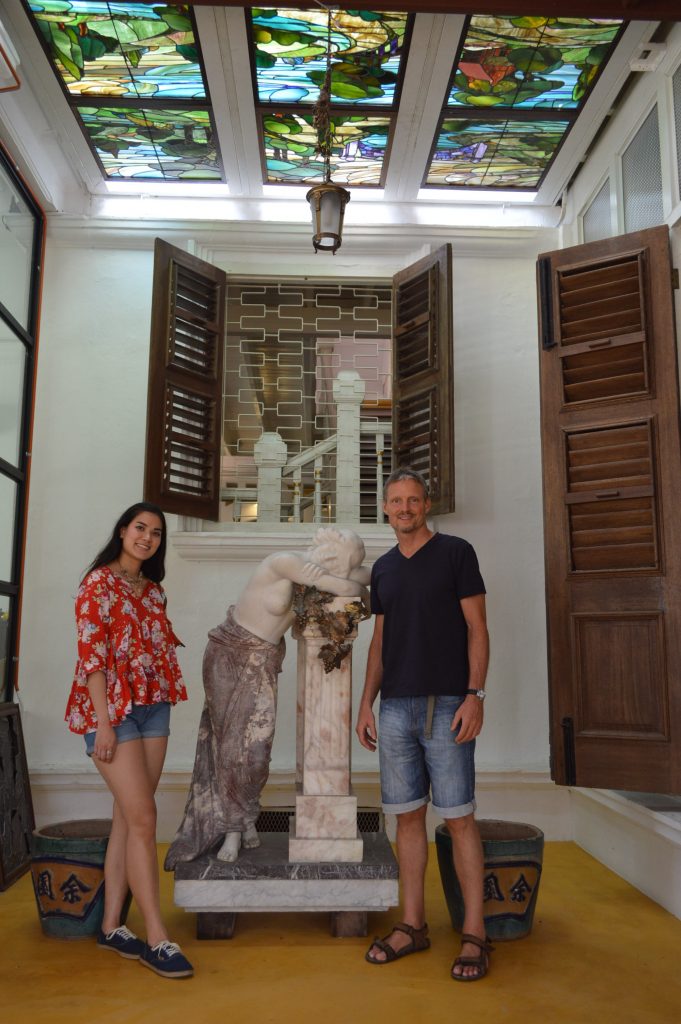
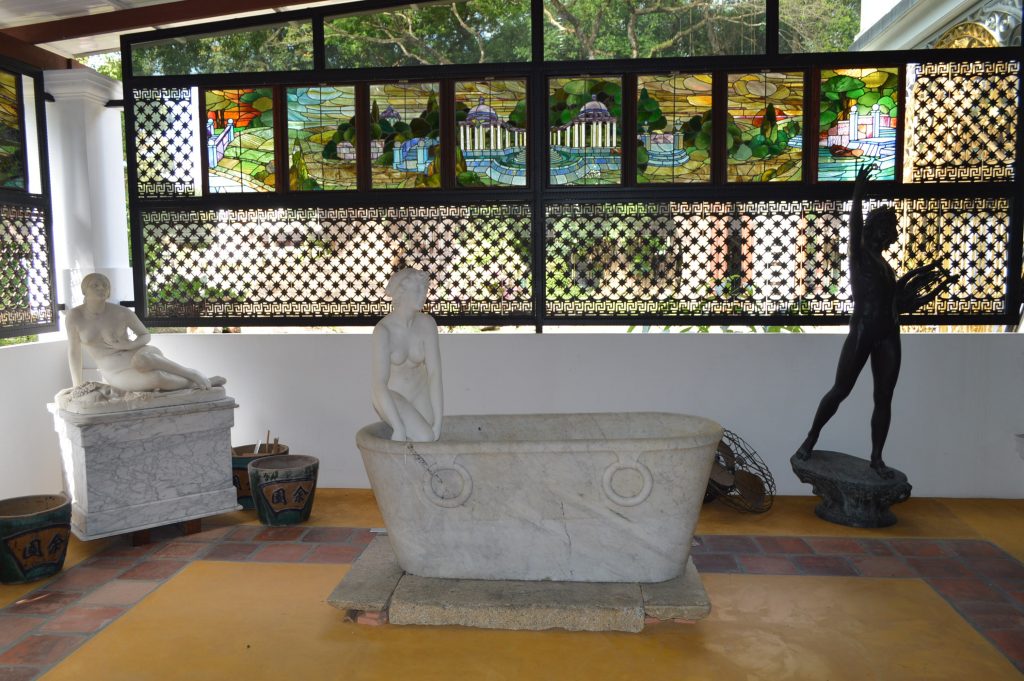
Bird of Paradise at Colonial Penang Museum
Thanks to the Planet Earth series on the Discovery Channel about 10 years ago, I immediately recognized the “bird of paradise” that was on display. However, it was a bit sad so see such a beautiful exotic bird reduced to parlor furniture.
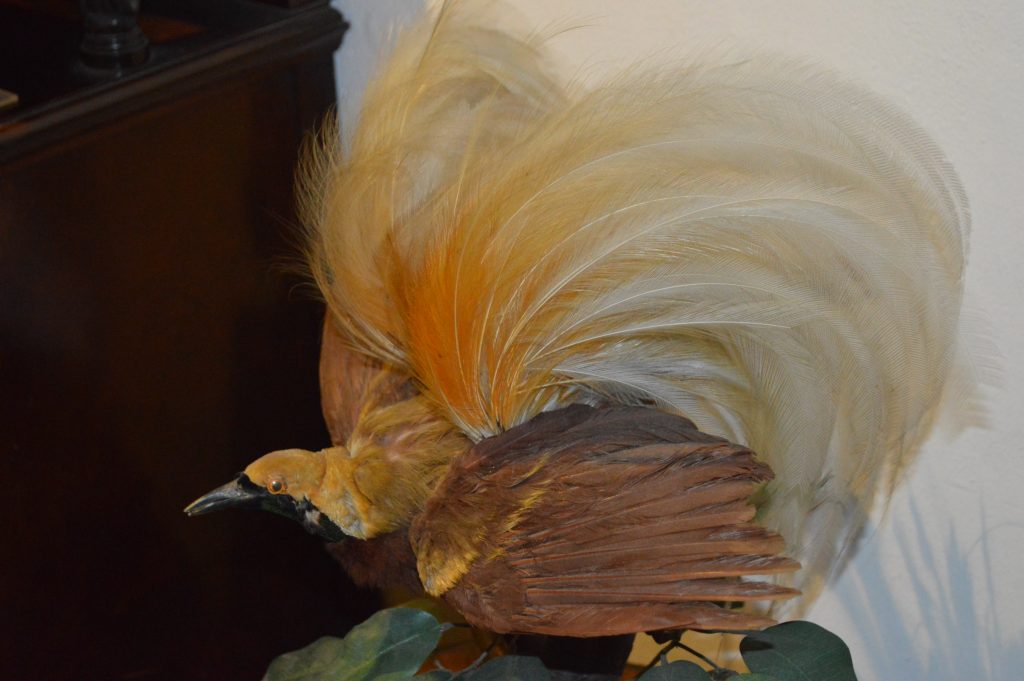
Additionally, it was even more disheartening to read the placard which explained that the Europeans would cut off the wings and feet of the bird before they brought it home. Apparently, this led to their belief that it was a sublime creature that never touched the ground. Hence, they dubbed it a “bird of paradise”.
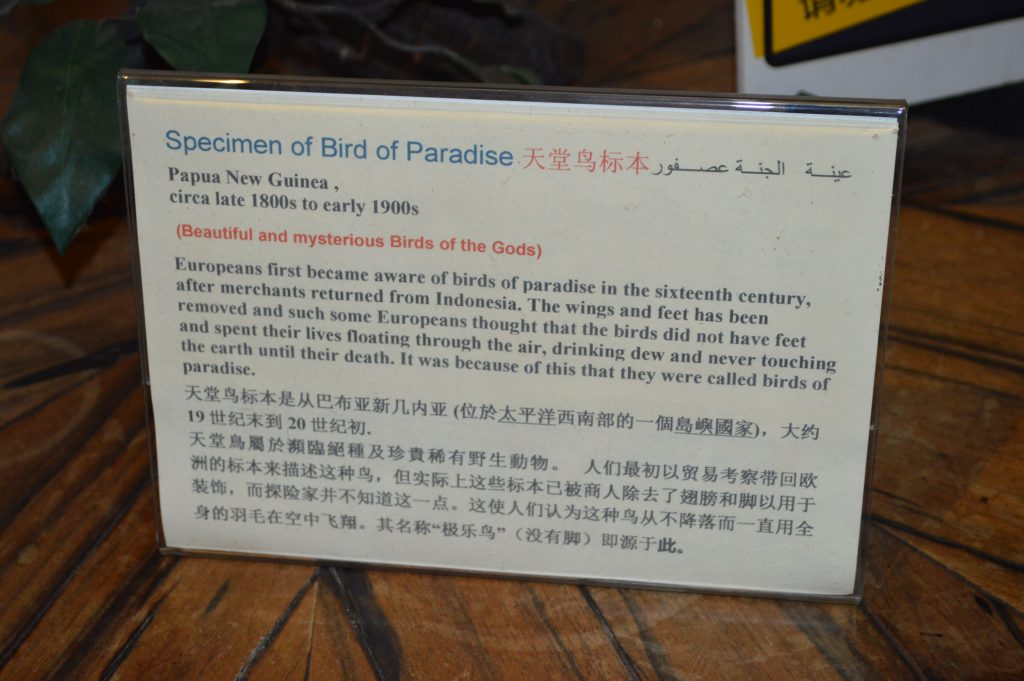
Asian Artifacts at Colonial Penang Museum
The vast majority of the paintings, statues and furniture at the museum was of European origin. Unfortunately, there was not much Asian art on display at the museum (Buddha head in the courtyard notwithstanding).
However, there was a couple of pieces worth mentioning including a statue of Sun Wukong the Chinese “Monkey King” and this carving of an angry god.
First, in the atrium we found this giant tree stump and roots which had been sculpted into the face of an angry god. This exotic piece comes from Indonesia.

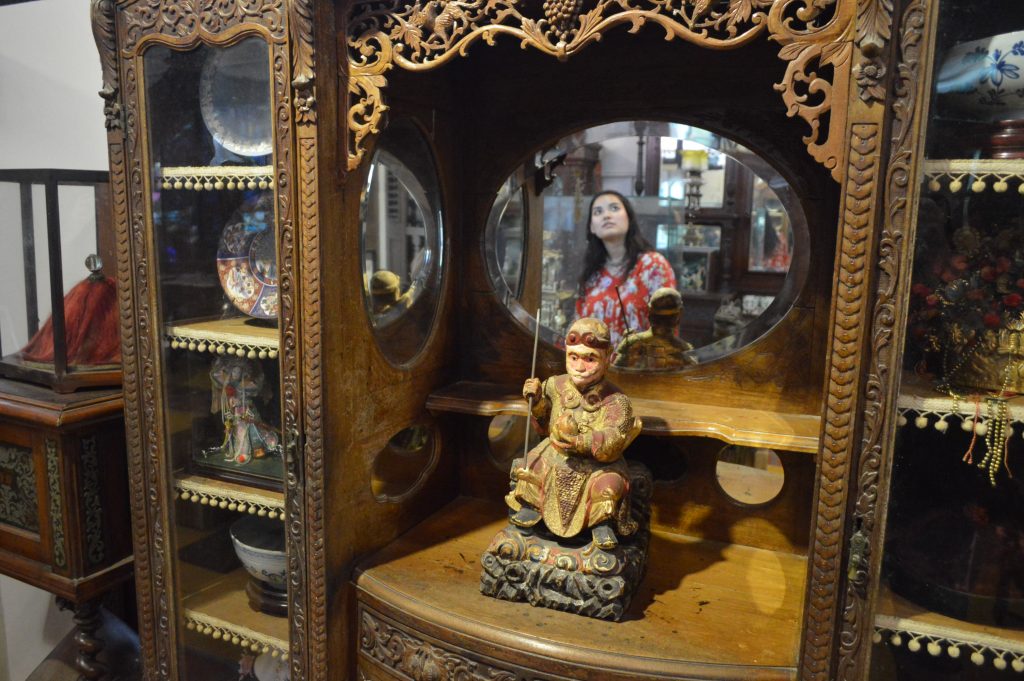
1920 Antique Phonograph
Last but not least, we discovered this 1920’s phonograph. It actually still worked and the museum hostess played some music for us.
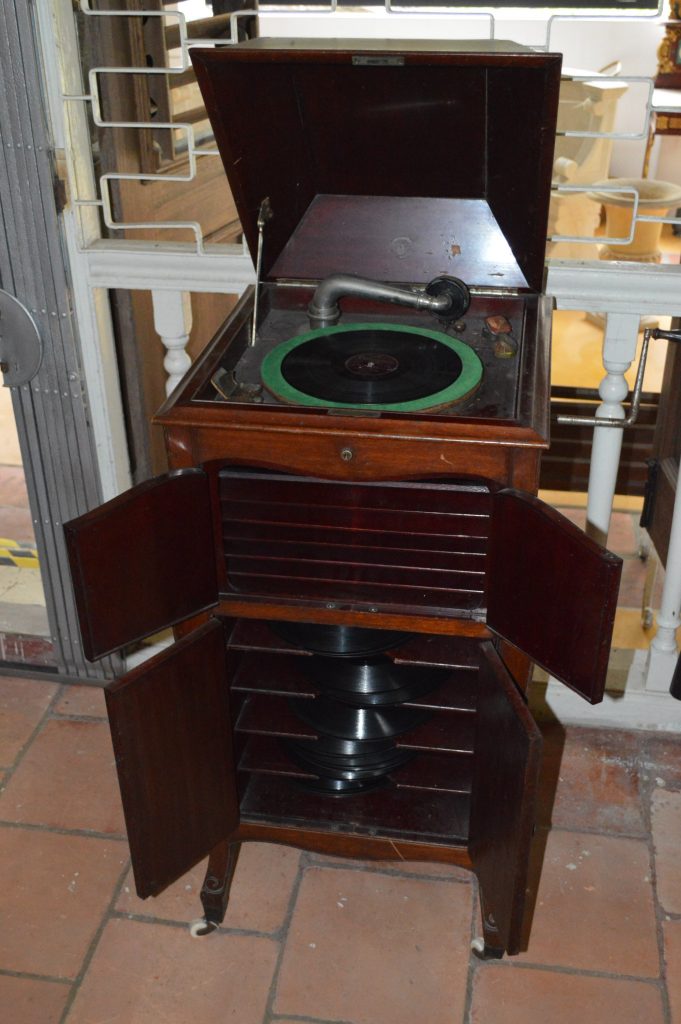
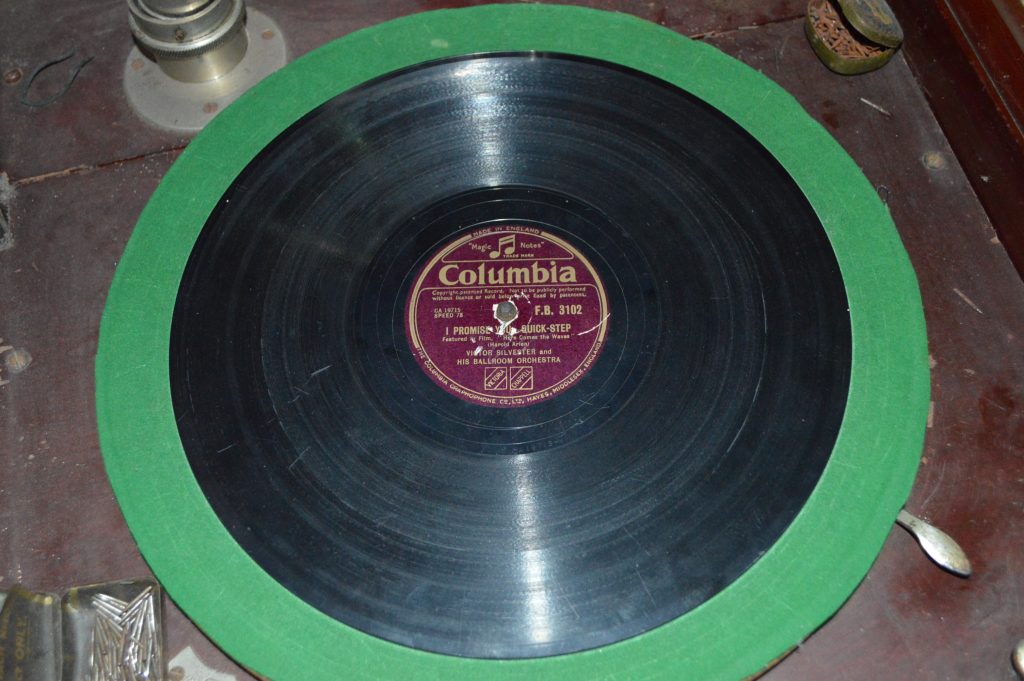
Colonial Penang Museum Summary
The main take away from a visit to the Colonial Penang Museum is that European artwork in Penang is really just a vanity. Unfortunately, the Peranakan would receive a rude awakening when the British hastily abandoned Penang at the outset of WWII.
Indeed, the Peranakan were refused passage on steamers departing for England due to the whites only policy of the British colonists. The Peranakan and the rest of British Malaya were left to fend for themselves during the brutal Japanese occupation.
The Colonial Penang Museum is surely worth a visit. Unfortunately, it is located on the outskirts of George Town and may not get the touristic attention that it deserves. However, it is certainly on par with the more popular Blue Mansion located downtown.
Be sure to stop by the Colonial Penang Museum especially if you can appreciate 19th and early 20th century European antique art.
Recommended Malaysia Travel Posts
See Penang Hill at Bukit Bendera
Langkawi Island the “Jewel” of Malaysia
Visit Gua Tempurung in Perak

